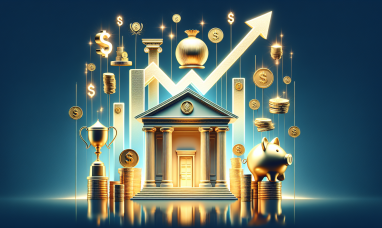US consumer sentiment unexpectedly fell to its lowest level in eight months in early July, as persistent high prices continued to weigh heavily on Americans’ perceptions of their finances and the broader economy.
Decline in Consumer Sentiment
The sentiment index, as measured by the University of Michigan, dropped to 66 in July from 68.2 in June. This decline came as a surprise, with economists surveyed by Bloomberg predicting a slight increase to 68.5. The decrease in consumer sentiment reflects ongoing concerns about the economic landscape, despite some indications that inflation might be easing.
Inflation Expectations
Consumers’ expectations for inflation over the next year decreased for the second month in a row, falling to 2.9%. Similarly, their outlook on costs rising at an annual rate over the next 5 to 10 years also edged down to 2.9%. Joanne Hsu, director of the survey, noted, “Despite expecting inflation to ease, consumers remain vociferously frustrated at the persistence of high prices. Almost half of consumers spontaneously expressed complaints that high prices are eroding their living standards, matching the all-time high reached two years ago.”
The University of Michigan released a special report on inflation expectations, highlighting a divergence driven by a small number of consumers. This discrepancy suggests that the overall consumer inflation expectations have not fundamentally deteriorated.
Economic Data and Federal Reserve Actions
Earlier this week, data indicated that inflation cooled broadly in June, with underlying price trends posting the smallest advance since 2021. This development bolstered the argument for the Federal Reserve to consider cutting interest rates in the coming months.
However, a separate report on Friday showed a firmer-than-expected rise in wholesale inflation. Despite this, details of the report pointed to underlying softness in the Fed’s preferred price gauge, the personal consumption expenditures price index. Following the Producer Price Index release, analysts at Morgan Stanley (NYSE:MS) and Capital Economics adjusted their estimates for core PCE downward.
The recent decrease in inflation has provided some relief to consumers who have been feeling the pressure from the post-Covid spike in inflation. Goods prices have declined over the past year, contributing to this easing.
Labor Market and Consumer Spending
The labor market, a significant driver of consumer spending, has shown signs of cooling. Unemployment rose to 4.1% in June, its highest level since late 2021. This cooling trend in the labor market could dampen consumer sentiment further if it continues.
The current conditions gauge fell to 64.1 from 65.9, reaching its lowest point since December 2022. Additionally, the measure of expectations declined to 67.2 from 69.6, marking an eight-month low. The buying conditions for durable goods dropped to 85, the lowest level in just over a year. Consumers’ perception of their financial situation, both present and future, deteriorated in July, hitting the lowest levels since October.
Election Concerns
The report noted that the upcoming November presidential election might be influencing consumers’ economic expectations. “With the upcoming election, consumers perceived substantial uncertainty in the trajectory of the economy, though there is little evidence that the first presidential debate altered their economic views,” Hsu said.
Conclusion
The decline in US consumer sentiment to an eight-month low in July highlights the continued impact of high prices on American consumers. Despite some signs of easing inflation, frustrations remain high, and the cooling labor market adds to economic uncertainties. As the Federal Reserve considers future interest rate cuts, the interplay of these factors will be crucial in shaping consumer sentiment and the broader economic outlook in the coming months.
Featured Image: Freepik









